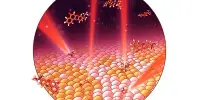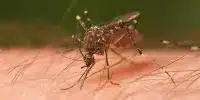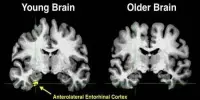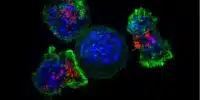Scientists have been baffled for decades by the signals plants send to initiate photosynthesis, the process of converting sunlight into sugars. Those previously cryptic signals have now been decoded by UC Riverside researchers. Botanists have known for over a half-century that the nucleus, the command center of a plant cell, sends instructions to other parts of the cell, compelling them to continue photosynthesis. Plants cannot turn green or grow without these instructions, which take the form of proteins.
“The nucleus encodes hundreds of proteins that serve as building blocks for the smaller organelles, which presented us with a challenge. Trying to figure out which ones are the signal to them to start photosynthesis was like looking for needles in a haystack” Meng Chen, a botany professor at UCR, agreed.
The method used by Chen’s lab scientists to discover four of these proteins is now documented in a Nature Communications paper.
The nucleus encodes hundreds of proteins that serve as building blocks for the smaller organelles, which presented us with a challenge. Trying to figure out which ones are the signal to them to start photosynthesis was like looking for needles in a haystack.
Meng Chen
Previously, Chen’s team demonstrated that certain proteins in plant nuclei are activated by light, kicking off photosynthesis. These four newly identified proteins are part of that reaction, sending a signal that transforms small organs into chloroplasts, which generate growth-fueling sugars.
Chen compares the whole photosynthesis process to a symphony.
“The conductors of the symphony are photoreceptor proteins in the nucleus that respond to light. In this paper, we demonstrated that both red and blue light-sensitive photoreceptors initiate the symphony. They turn on genes that code for photosynthesis’s building blocks.”
In this case, the symphony is performed in two “rooms” within the cell, by both local (nucleus) and remote musicians. As a result, the conductors (photoreceptors), which are only found in the nucleus, must send messages to the musicians who are located elsewhere. The four newly discovered proteins that travel from the nucleus to the chloroplasts control this final step.

The National Institutes of Health funded this research in the hopes of finding a cure for cancer. The similarities between chloroplasts in plant cells and mitochondria in human cells give rise to this optimism. Both organelles produce fuel for growth and contain genetic material.
A lot of current research focuses on communication from organelles back to the nucleus. If the organelles detect a problem, they will send a signal to the nucleus “headquarters.” Much less is known about the nucleus-to-organelle activity-regulating signals.
“The nucleus may control the expression of mitochondrial and chloroplast genes in a similar fashion,” said Chen. “So, the principles we learn from the nucleus-to-chloroplast communication pathway might further our understanding of how the nucleus regulates mitochondrial genes, and their dysfunction in cancer,” Chen said.
Understanding how photosynthesis is controlled has implications beyond disease research. Human settlements on another planet would almost certainly necessitate indoor farming and the development of a lighting scheme to increase yields in that environment. Climate change is posing immediate challenges for crop growers around the world.
“We can survive on this planet because organisms like plants can perform photosynthesis. There are no animals, including humans, without them” Chen stated. “A thorough understanding of plant growth, as well as the ability to manipulate it, is critical for food security.”














